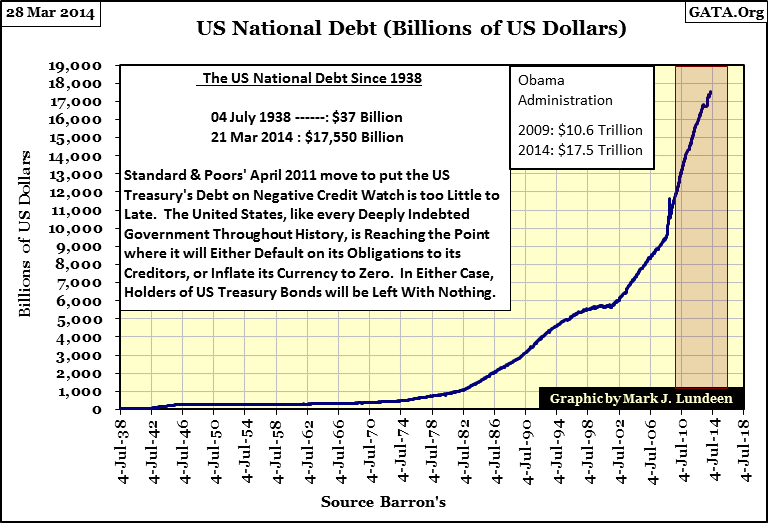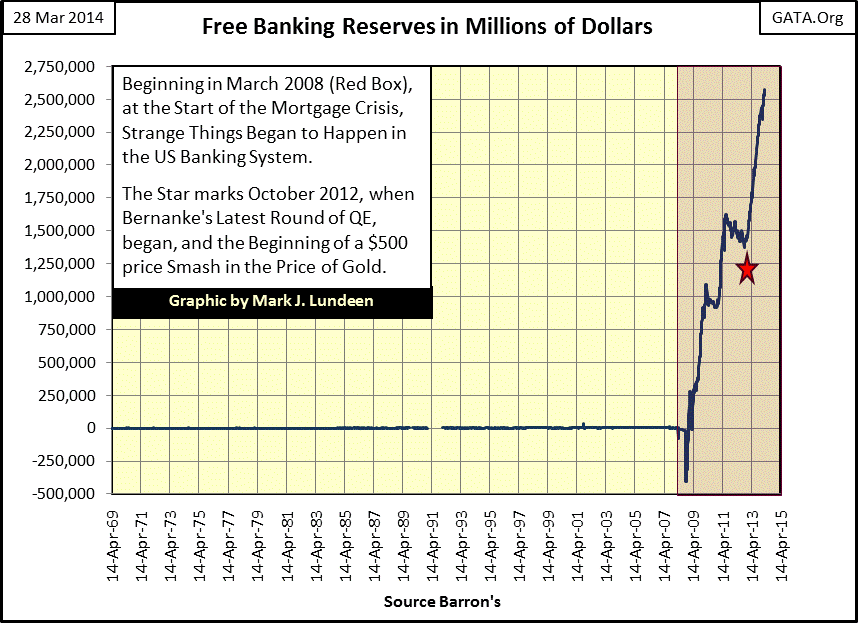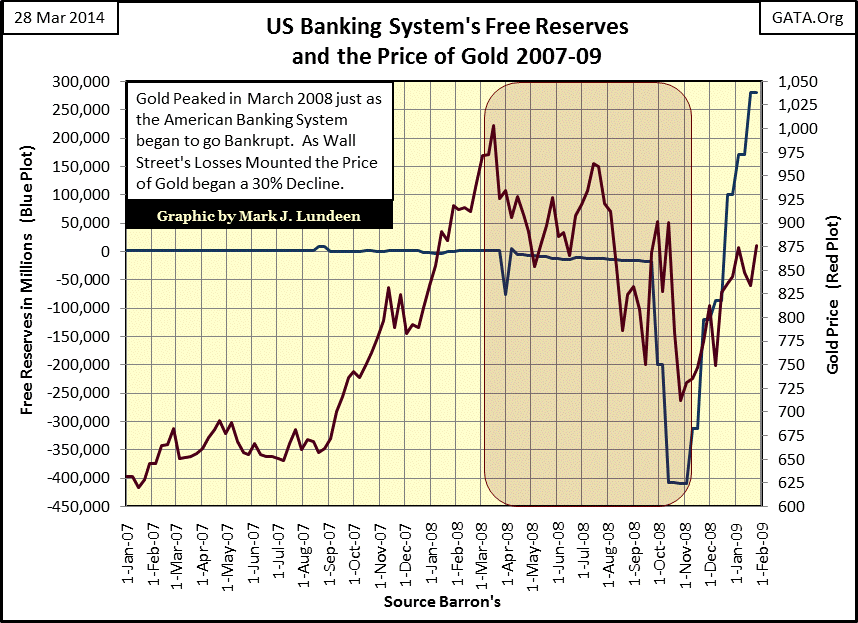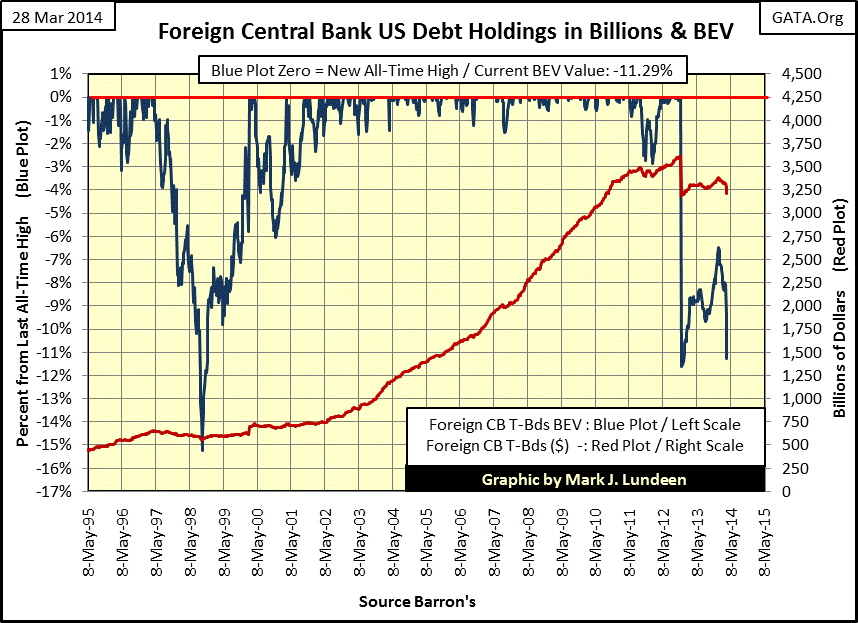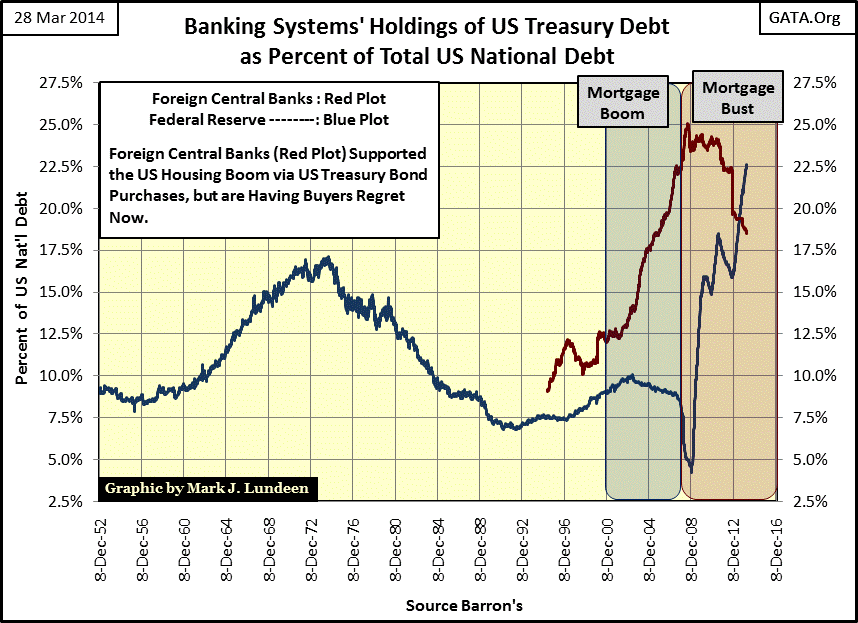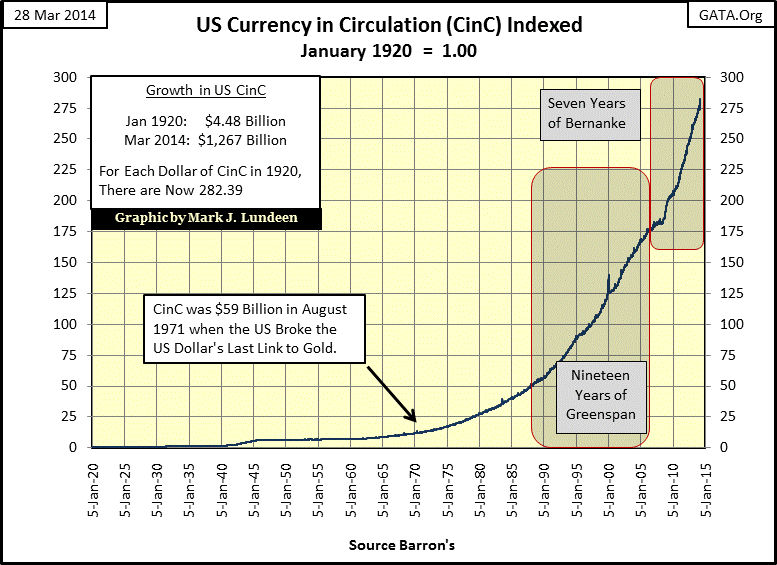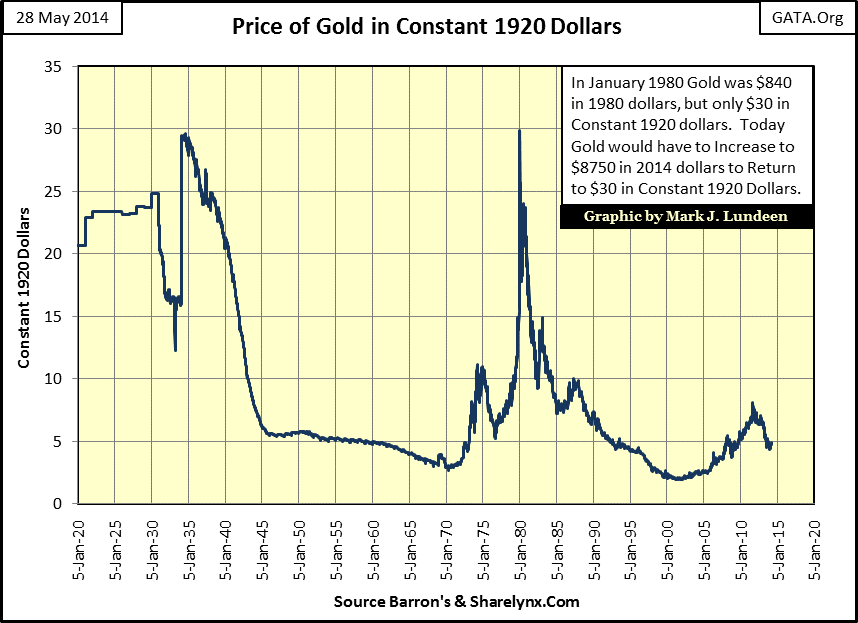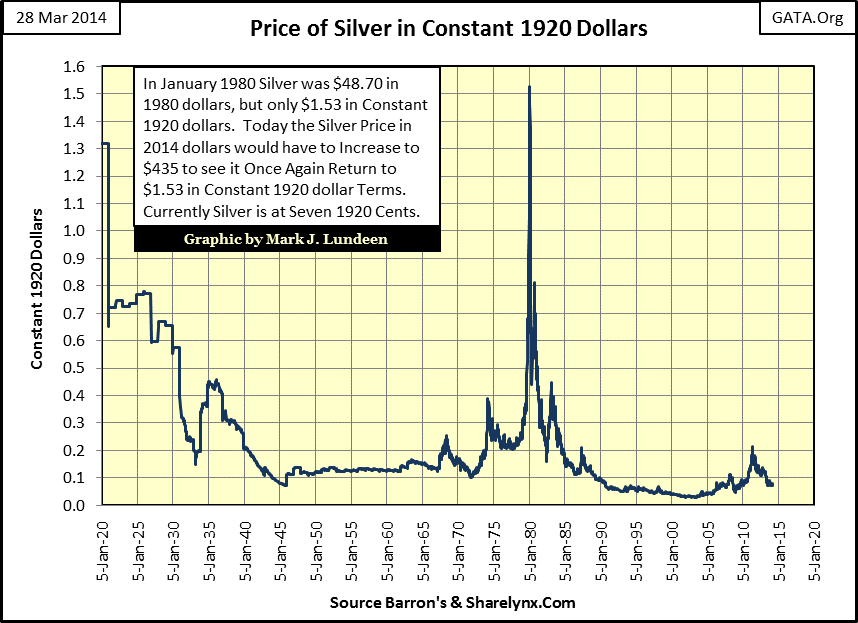The All Consuming Burdens Of Debt
Under a Gold Standard, debt doesn’t pile up over the years as we see below with the US national debt. Credit creation during the gold standard era was used to fund future wealth creation. This new credit money was used to extract minerals and petroleum from the ground, plant and harvest crops, and manufacture finished goods for sale. When the newly produced goods were sold into the market, the debt used to finance their production was extinguished when the debtor returned the creditor’s money (gold) to them with interest. This cycle of debt was then repeated with new credit instruments to again fund future production of goods using the same old gold. This system was deflationary as money actually increased in value over time, a very desirable feature in a world of savers who generally shunned personal debt as if it were the plague. Though it may sound strange today, the gold standard was the monetary system during the industrial revolution, so it’s hard to argue that gold hindered economic growth, when the captains and kings of industry and politics respected the limits gold money imposed upon them.
“Gold Is Money, and Nothing Else.”
- JP Morgan, testifying under oath to Congress before the Pujo Commission, 1913
The US national debt is the perfect example of what our current debt backed monetary system allows: the perpetual rollover of past debts by government as it continually burdens the private economy with ever larger liabilities. Debt taken on by the Federal Government in the 1930’s during FDR’s New Deal is still being rolled over eighty years later. Well, that’s great for the banking system and Washington’s entrenched politicians, but the American national debt is denominated in the global reserve currency. So in fact, Washington is expanding its claims on future wealth faster than the global economy can create it. Currently, the Obama misadministration is expanding the national debt by a trillion dollars a year, so our global trading partners have ample reason to be unhappy with the current American dominated global monetary system.
For political purposes, vast sums of credit were created by monetizing the national debt, which were then targeted at the American real estate market in the aftermath of the high-tech bubble, frequently to individuals with marginal credit histories. This was no matter for concern by the “policy makers”, since housing prices always go up, and these deadbeats could always sell out for a profit before foreclosure proceedings became a concern, (or so the best minds in finance and politics believed.) Ill-conceived American mortgages became a liquid multi trillion dollar market, yielding little more than US Treasury bonds as they were rated AAA debt by all the bond rating agencies. When the real estate market went bust, they shook the global establishment.
Looking at the American banking system free reserves in the chart below, it appears they were little changed from 1969 up until the credit crisis. That isn’t true but the post October 2008 “liquidity injections” into the banking system makes it appear so. With liquidity in the trillion dollar mortgage market beginning to evaporate in 2007, the banking system began having problems converting their “mortgage assets” into ready cash for daily operations. By October 2008 the banking system’s free reserves had crashed to negative $400 billion dollars. The big Wall Street banks became insolvent and should have been shut down with the Justice department beginning criminal prosecutions of their officers. But that isn’t what happened; instead Washington decided to flood the banking system with dollars backed by US Treasury bonds. Then, Doctor Bernanke began “monetizing” these banks’ toxic mortgages and “injecting” the liquidized residue back into the banking system – Yuck!
The result of Doctor Bernanke’s “monetary policy” can be seen in the red box above. It’s interesting to note that in October 2012 (Red Star), this inflationary increase in bank reserves occurred as the price of gold and silver continued to decline. However, since the mortgage market went bust in 2008, this was not the first time such strange things have happened. March 2008 saw gold and silver going on to make new highs in their 2001-08 bull markets, as the Federal Reserve made an emergency loan to Bear Stearns to avert its bankruptcy. The emergency loan failed to save Bear Stearns, marking the start of the collapse in the American banking system’s free reserves and in the price of gold and silver (see chart below).
More people today have a college degree than ever before. But the education establishment today has taken sides with the paper dollar system that has been so generous to it. The Federal Reserve System is managed by former University faculty members, who are very free with grant money for “economic research”, as long as that research validates the operations of the Federal Reserve System. The Fed’s banking system provides the funds for college loans that have enriched the academic world with over a trillion dollars. Washington, today, is also the source of grant money for university research into such diverse and critical subjects as feminine studies and why children fall off tricycles. For the education establishment there is absolutely nothing to be gained by a return to honest money, and you can see this in the opinions of its graduates on the Federal Reserve System and on gold. So what if free reserves in the American banking system are taking off into outer space, nothing unusual about that, is there?
But it seems that college educated people controlling other central banks are no longer enthralled by the US dollar, as is evident in the chart below. Since December 2012, foreign central bank holdings of US Treasury bonds at the Federal Reserve have been declining, but not long ago Washington’s IOUs were being purchased enthusiastically by these institutions. What’s changed since that peak? Most likely, the future value of the “full faith and credit of the US Government” has been discounted by them. The chart’s blue BEV plot shows a big decline since mid-February of this year. This could be a sign of a continuing trend in central banking, reducing their exposure to Uncle Sam’s IOUs.
Currently, these foreign central banks aren’t large sellers of US Treasury bonds, but they haven’t been big buyers over the past two years either. For now they are maintaining their US Treasury bond holdings at around $3.25 trillion and that is causing a problem for the managers of “monetary policy” in the USofA as is evident below, where we examine the Federal Reserve and foreign CB US Treasury bond holdings as a percentage of US national debt.
Seeing US Treasury debt as a monetary asset is more believable when governments other than the US Government purchase them for that purpose, as we see from 1999 to 2008 (in the chart above). But since August 2008 things have changed (as seen in the table below).
The current structure of global finance is going to have severe problems in the not too distant future. How best to survive the coming crash in the debt backed dollar is a question that is constantly on my mind. Realizing that nothing is really new under the sun, we see that history is full of examples of monetary madness, once hailed as terrific innovations in commerce, only later to be revealed as giant scams, leaving poverty and want in their demise. In these past failed monetary experiments, gold and silver proved to be safe harbors to those wise enough to see the inevitable conclusion. So what can we expect from gold and silver when the bubble in the Treasury Market eventually begins to deflate? I can’t exactly say, but the following charts pricing gold and silver in constant 1920 dollars (prices deflated by Currency in Circulation - CinC) might provide us with some insight. Here’s the chart for US CinC I used to deflate the gold and silver prices.
For example I take the current week’s closing price of gold ($1,294.75) and divide it by this week’s indexed value of CinC (282.39) to arrive at $4.58 gold in constant 1920 dollars.
I find it interesting that gold priced at $30 in constant 1920 dollars seems to have some significance. It hit this level twice in recent history; once in 1934 after the US dollar was devalued from $20.67 to $35 an ounce by President Roosevelt, and again in January 1980 at the top of the roaring 1970’s gold bull market, when the price once again reached $30 in constant 1920 dollars. On both occasions the US dollar was in a monetary crisis, and seen as a dubious currency in the world’s financial markets, a situation the dollar has yet to find itself in the 21st century. Back in January 1980 it took $840 in 1980 dollars to purchase an ounce of gold, something that only took $35 after the 1934 devaluation. But at the peak of both dollar crises, gold was trading for $30 an ounce (when priced in constant 1920 dollars). Today, it would take $8750 current dollars to equal the same $30 in constant 1920 dollars (needed to purchase an ounce of gold in 1934 and in 1980), so seeing gold trading at less than $1300 current dollars ($4.58 in 1920 dollars) suggests a huge upside for investors patiently waiting for another monetary crisis to strike the US dollar.
Here we see silver priced in constant 1920 dollars. In January 1980, with silver trading at $48.70 (in 1980 dollars), silver peaked at $1.53 in constant 1920 dollars. Today, silver would have to increase to $435 in today’s 2014 dollars to once again rise above the $1.50 line in the chart below.
Now I admit that fixing the value of gold and silver in 1920 dollar terms is just a thought experiment. But since 1920, $30 gold and $1.50 silver in 1920 terms proved to be significant to investors, if not to members of the Federal Reserve. But valuing gold, silver and anything else in US dollars may become a futile exercise should current trends in debt and monetary policy continue. If history is any guide we should be seeing some strange concepts coming from economists to keep the dollar from derailing off of its inflationary tracks.
Paul Krugman, Nobel Prize winning economist from Princeton University floated the idea of minting an ounce of platinum into a trillion dollar coin as a means of circumventing the debt limit. Taking $1500 in platinum and leveraging it into a trillion dollars of purchasing power at the US mint would certainly be an audacious move in modern “monetary policy.”
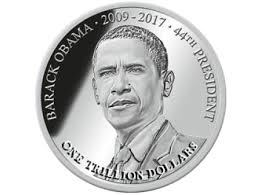
You may laugh at this idea, but when Doctor Bernanke, President Obama or the big spenders in Congress first heard Doctor Krugman’s idea, were they shocked or were they intrigued by its possibilities in bypassing the debt limit? I expect they liked the idea – a lot, and also contemplated other possibilities a trillion dollar platinum coin could provide to their fiscal and monetary “policy.” After all, the dollar may be the global reserve currency, but they control it so who is there to stop them from doing whatever they want? The only check on the expansion of US Currency in Circulation is their fear of whether or not the world will continue to accept the dollar for payment in the global market place. With the current crew in charge of managing the dollar, the day is soon coming when it will fail as a global economic unit of payment. At that point how many dollars your gold or silver is worth will become a moot point. All anyone will care about is how much weight in metal you have.






